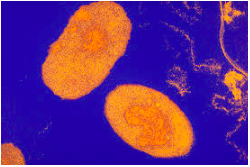Everything You Need To Know About The “Whoop” – Diseases of SHS

Photo Credit: Flickr
Walking through the halls of SHS, one will likely hear music playing way too loudly from someone’s AirPods, possible crying after a chemistry test, and… aggressive coughing? Yes, that’s right. Following the recent outbreak of pertussis, also known as whooping cough, a vicious-sounding cough is a concerningly familiar sound for any student or faculty member.
According to the CDC, pertussis “is a highly contagious respiratory disease caused by the bacterium Bordetella pertussis.” Additionally, the cough is most known for being violent and occurring in periods of coughing fits. During these fits, breathing can become difficult, forcing the person to gasp for air, resulting in a “whoop” sound.
Like many diseases, pertussis is more dangerous and risky for babies but can be serious to anyone. According to Mayo Clinic, pertussis can be spread by respiratory droplets when someone infected sneezes or coughs. Additionally, the cough can be spread by skin-to-skin contact, such as a handshake, and through saliva. Clearly, this is a highly contagious and an easily spread illness. Although dangerous, pertussis can be less severe when the person who has it has been recently vaccinated for it. When diagnosed early, it can be treated with antibiotics in a matter of days.
Again, pertussis can be extremely dangerous if not treated in a timely manner, so if you present the symptoms of the “whoop”– coughing, runny nose, nasal congestion, and sneezing — seek medical attention. Not just for you, but for the rest of the SHS student and faculty body.











